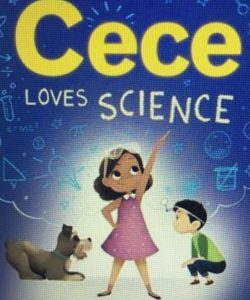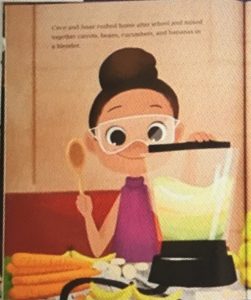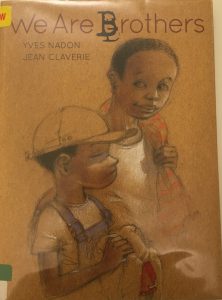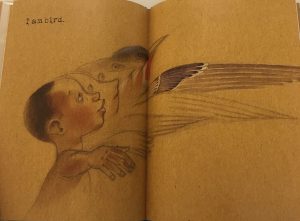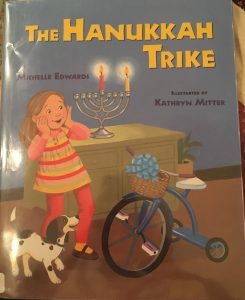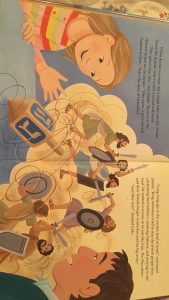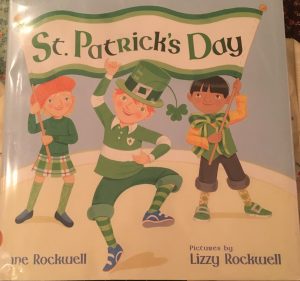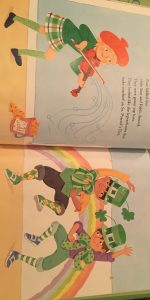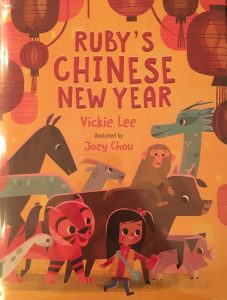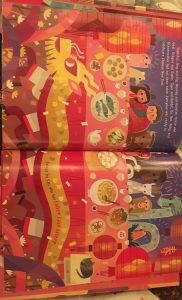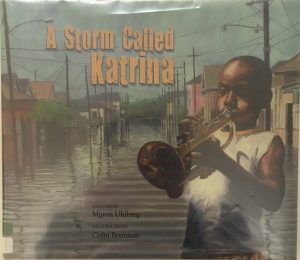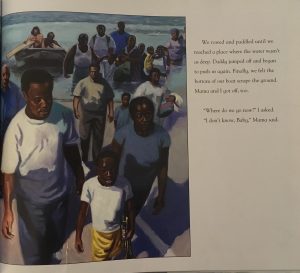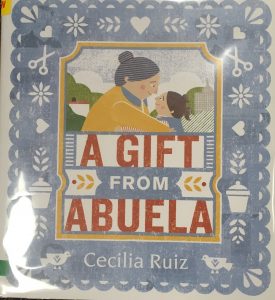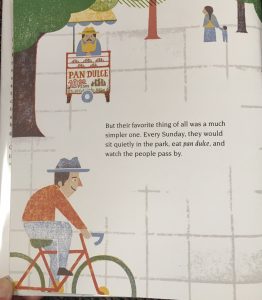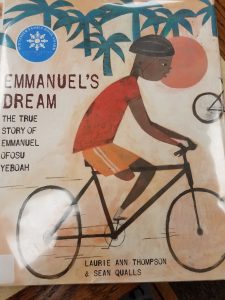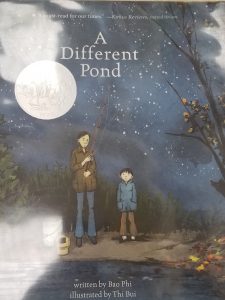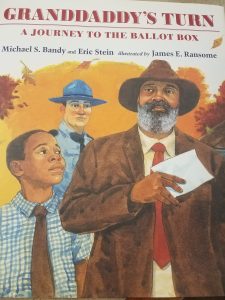
Title: Granddaddy’s Turn: A Journey To The Ballot Box
Author: Michael S. Bandy and Eric Stein
Illustrator: James E. Ransome
Publisher and Year: Candlewick Press 2015
Number of pages: 32
Tags/Themes: Diversity, Emotion, Family, Historical Fiction
Genre: Historical fiction, Children’s, Culutral, Picture Books, African American, historical, Family
Descriptive Annotation: Michael remembers the time his granddaddy took him to the voting polls. Michael was only a child and would work on a farm with his granddaddy. They both dressed up and the voting polls had huge lines and they kept on getting cut by white voters. His granddaddy kept telling Michael to be patient and saying their time will come. Once granddaddy got his ballot, he expressed to Michael how it was the happiest day of his life. Shortly after, a police officer asked granddaddy if he could read, which granddaddy couldn’t. The police officer then ripped up his ballot, and the two walked away defeated and granddaddy crying. The book then goes to Michael as an adult voting for the first time. Michael votes on behalf of his granddaddy and votes for everyone else who wasn’t able to. The students will need basic background on what voting is, how it works, and the importance of voting, as well as background as to why black people couldn’t vote in the 1950s and 1960s (when the book took place). The book does have a brief history lesson in the back.
Classroom Application: This text can reinforce social sciences, but more so the importance of voting. This text could meet Social Emotional Learning Standards of recognizing feelings and perspectives of others. This text shows the pain granddaddy went through from not voting, and there could be students in the classroom who have family experiences that are similar. It also will paint a picture for white students to recognize how a specific act of discrimination can affect someone and how important voting is for people of other races. This can also stretch the students ’ thinking by starting a foundation of how important it is for them to vote as active citizens in America, and to take voting seriously, since it is a privilege to vote.
Linguistic and Cultural Diversity Analysis: This book represents the black community and shows the historical struggles of voting. It teaches how there is a history of different groups of people not being able to vote. For instance, in one scene, granddaddy faced the hatred of a voting official: “The deputy slammed the book shut, saying, “Well, Uncle, if you can’t read this, then you can’t vote.” He tore up my granddaddy’s ballot and threw it on the ground” (24). There was a culture of discrimination people of color and those who can’t read. This book acknowledges and teaches the history of the past culture. When Michael voted, he held onto his family’s history and said, “When I went to vote for the first time, I remembered what my granddaddy always said: “Patience, son, patience.” He was right. The day finally came. And I knew that – just like my granddaddy – I would never take it for granted” (30). The end of the book demonstrates the seriousness of voting and how voting is still a recent privilege for black people. It’s important to take voting serious since many people fought for the right to vote. I might introduce this book by asking the students if they have voted before. Voting is also as simple as voting with your friends what game to play. If my class has done any type of voting before (like voting on what science video to watch) then I can bring up how they have all voted before. This will activate their schema how they all had a voice when they voted and how important their voice was.
